by Walter Lim
(Published in Zaobao on 1 November, 2013, translated by Fabian Tee )
Taking a Closer Look at Singaporeans’ “Interest in the Wild (side)”
I refer to the commentary by Mr Goh Choon Kang ( a media professional and a former MP) entitled “Looking from the sidelines at Singaporeans’ interest in the wild side” dated Oct 23, 2o13. In it he posed the question : “why did the dialogue between civilian and government not take place before unilateral action was taken by one party with the expressed hope of opening more channels of communication? Just reflect for a moment, how the official in charge of heritage affairs must be feeling right now.”
This article has created considerable public misconception. The Prime Minister, after all, had on the occasion of the opening of the Heritage Festival 2013 said that:
“The government does not own the Singapore heritage. It does not define the Singapore heritage. Our heritage is a collection of individual memories, woven together into a national story. It is something that belongs to every Singaporean, and which each one of us can contribute to and help to preserve, individually and collectively”. PM Lee.
Therefore, it stands to reason that any civilian initiative to help Singapore preserve its heritage should be a source of comfort for the authorities. Besides, the National Heritage Board’s Alvin Tan is a broad-minded and enlightened official, and not a petty/small-minded individual as implied by Goh.
In Goh’s article entitled “The basis and limits of dialogue”, he stated that “perhaps I lacked culture or cultural depth, but I feel that most Singaporeans are unlikely to bring their old or young to a desolate place in the middle of nowhere during their free time”.
(I agree) Most people are of this (Goh’s ) same mindset – civilians and officials alike, think that way. It was under such dire circumstances that the application to World Monuments Fund was made. Can anyone imagine holding a dialogue under such circumstances? It would have been laughable. Fortunately the unrelenting efforts (of many) have paid off and many parents do bring their children and elderly parents to Bukit Brown. For his sake and society at large, I sincerely hope that Goh will deepen his cultural depth so that more young and old will come to Bukit Brown for leisurely walks.
On the government’s heavy burden of providing for the basic necessities for millions, Goh said that the volunteers are of the opinion that “you (government) can resolve to solve the existing traffic problems, just leave our Bukit Brown alone. For the record, many alternative plans/suggestions were submitted to the government once the road announcements were made. Subsequently there were suggestions to leave the tombstones by the roadside, blending the past with the modern. Recently, we also took part in the exercise to incorporate Biddari’s history into the planning of the new town. These efforts collectively demonstrate that the volunteers are trying to strike a balance between preserving the past and developing the future. Unfortunately, none of our suggestions/feedback for Bukit Brown found fertile ground and they have since fallen by the wayside.
On the other hand, the plan for Lornie Road reflects a lack of foresight and planning. Three years after expanding the number of lanes on Lornie/Adam Roads in 2009, the government now anticipates a reduction in the (Lornie) lanes after the Bukit Brown highway is built. Instead of expending money on the expansion and subsequent shrinking of Lornie Road, why not just build the Bukit Brown highway in the first place? The excitement that followed the government’s undertaking to quicken the pace of housing and transport infrastructural development after the last General Election quickly morphed into a hidden worry. Plans for building Bukit Brown highway were carried out without the benefit of any impact assessment particularly that of a heritage impact assessment in face of a large scale destruction of historic artifacts. In the final analysis, is the Bukit Brown highway really meant for development or is it an unmitigated disaster?
When the plans were announced last year, an estimated 5000 gravestones were to be affected and LTA then reduced that to 3746 due to a change in road plans. Now the official number has been re-estimated at 4153. What is really going on here? Even more worrisome for us is the sense of how heritage preservation is considered in this country. Minister Tan Chuan Jin said in parliament that (the preservation of) material culture including gravestone, carvings and tiles etc are very important. Yet after discussions at the higher level, there has been no concrete plans for a proposed memorial garden for the preservation of gravestones of important personalities. The imminent threat of destruction to thousands of graves has not provoke the local museums or Chinese clan associations to show any interest in preservation whatsoever. Dare I ask , is any government body or department truly satisfied with this (state of affairs) or process?
Leaving aside Goh’s portrayal of the Bukit Brown volunteers as a bunch of “wild enthusiasts”, this unlikely group of individuals who busy themselves over all things related to Bukit Brown, stands in stark contrast with the total lack of interest displayed by the leaders of the Chinese Clan Associations. This lackadaisical attitude even extends to the discovery of the tombstones of founding fathers of their clans.
At a time when the Gan Eng Seng alumni paid their respects to his grave during Qing Ming, the Chinese High and Nanyang Girls High and Industry Commerce Schools etc have instead chosen to forget their history.
When a country’s polity has no regard for our collective history and the hallowed grounds of our Chinese pioneers and civilisation, evoke nothing but disdain, are policies to blame and have the people all forgotten (the past)?
As Bukit Brown is doomed to its fate, a group of volunteers -whose ranks comprises Indian, Dutch and Japanese and others who know not a single Chinese character – are picking up the Chinese language to decipher tomb inscriptions, studying the various pioneers’ connections with old temples, clan associations, schools and some even extending their research into local history and the Chinese civilization. This abiding interest of the so called “wild enthusiast” calls for a deeper sense of reflection. Surely, this phenomenon is hardly one that can be understood by anyone looking from the sidelines.
More on the road expansion at Lornie Road here.
The full report in Chinese:
正视新加坡人的“野趣”
观点碰撞
吴俊刚先生在10月23日“侧观新加坡人的野趣”中说:“为什么
李总理在文化遗产节时说:“文化遗产并不专属政府,更不能由政府
吴先生曾在“协商的基础和限度”这篇文章就这么说:“也许我缺乏
武吉布朗就是在这种凄风苦雨的情况下,提出申请世界历史遗址,别
政府有为数百万公民解决衣食住行的重任,吴先生更说:“你可以设
反观罗尼路是未曾深思熟虑的工程,2009年扩建后通车三年,就
去年估计5000坟墓受影响,陆管局强调因修改道路设计而减少到
姑且不论武吉布朗学会为何成为吴先生笔下的“野趣”组织,倒是日
为政不思追慎远,一堆黄土惹人嫌,是政府的政策妨碍华社追慎远,
林志强
作者是文史工作者和武吉布朗华语导游
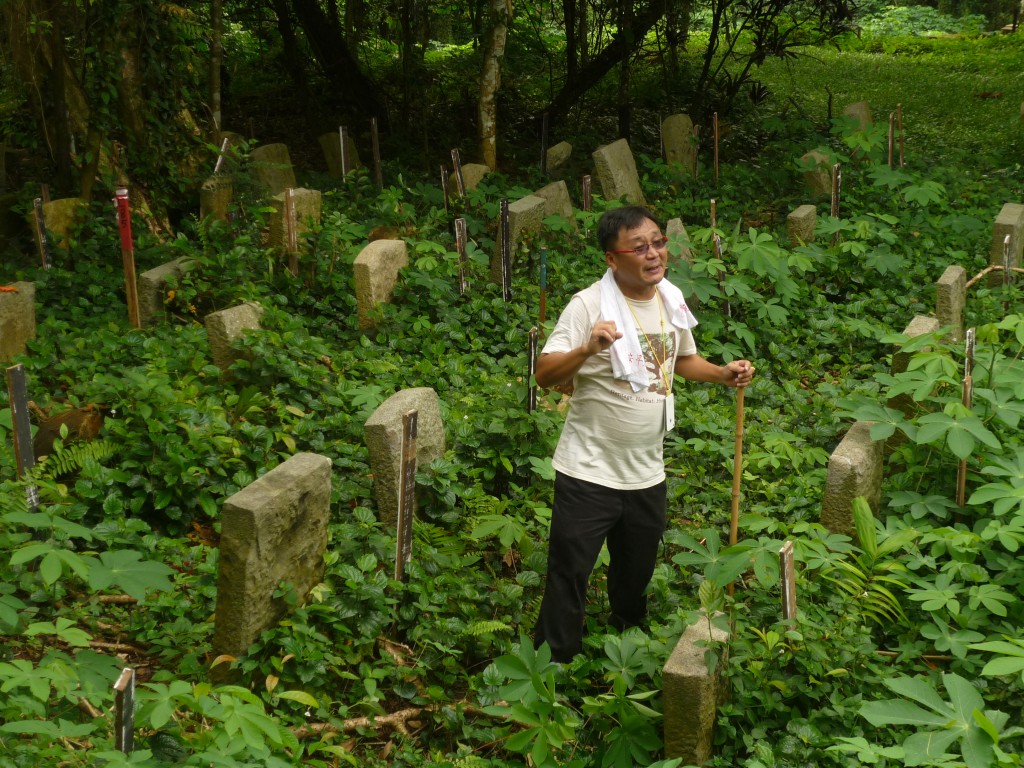
Cluster of Qing Tombs circa 1830s resited twice before Bukit Brown – now staked for exhumation to make way for 8 lane highway (photo Catherine Lim)
The Hindu Day of Remembrance
by Sugen Ramiah
1 November 2013
Like the Chinese who observe the annual “qing ming” or tomb sweeping festival in April, the Indians also honour their ancestors with a visit to their ancestors tombs on the Hindu day of remembrance. It takes place the Sunday before Deepavali, the festival of lights which falls on 2nd of November, Saturday.
On Sunday 27th November, I visited the Hindu cemetery located in Lim Chu Kang to pay respects and place offerings on my ancestors’ tombs.
My grandparents to date have a total of 125 descendants but sadly only 4 turned up, two cousins, my brother and myself.
The trip usually lasts for about two hours, as we’ll clean up five tombs, four in the Hindu Cluster and one in the Catholic cluster. Simple offerings including fruits and sweetmeats were placed on a banana leaf. With the lighting of an oil lamp and incense, the Indians remember their dearly departed.
In the evening at home, the entire family would gather. A feast that consists of eight dishes – chicken, mutton, eggs, fish, prawns, squid, crabs and vegetable, together with fruits, sweetmeats and Indian Peranakan delicacies such as the “kueh wajek”, will be laid before portraits of the ancestors. New cloths would be placed beneath the portrait, incense lit and finally the family members would eat the food that were offered.
Traditionally our forefathers from India were cremated , so there was never a need for tomb stones like the Chinese, Muslims and the Christians. The deceased were usually cremated within the day of death. But if they were wealthy, they would be given a burial. In the Hindu custom, the dead is also remembered on their death anniversary, known as a “theethi’”where a “mocham” lamp (light of liberation) is lit as a sign of remembrance.
Hindus have more than one festival to remember and honour their ancestors. On the full moon of the sixth lunar month of ‘Puratasi’ which falls in September/October, there is the ‘Mahalaya Amavasay’ also known as the fortnight of the ancestors. Hindus pay homage to their ancestors and offer prayers for the repose of their dearly departed at temples.
Some Hindus commemorate the dead during the Matu Pongal, on the second day of the “Pongol” Harvest Festival. The Indian Peranakans, known as the Chitty, celebrate the eve of Pongal with Bhogi Parachu – the ancestral worship festival. Since there were a few festivals to remember the dead, the local community here and in Malaysia decided that the Sunday before Deepavali will be the day of remembrance.
My grandfather, a wealthy merchant born in 1884, came to Singapore and contributed greatly to the Indian community of Singapore in the 1900s. He started the first dairy business here and contributed to the Sri Mariaman Temple in South Bridge Road He married my grandmother who was a Chitty- Indian Peranakan – from Melaka(Malacca) and she was the matriarch of the family. The honorary title is currently held by my aunt who is 85 this year.
As a Brownie, I have been moved by the descendants who return every year to Bukit Brown during “qing ming” to clean the tombs and pay their respects. I am also sadden by the tombs that lay neglected, which have been forgotten, and I hope more descendants will come forward and reconnect with their ancestors.
I am blessed and grateful to the friends/volunteers of Bukit Brown, who have kindly showed me how to appreciate and understand my own heritage and to be proud of who I am. This was the first time, my brother marked the remembrance day for our grandparents and it was for him an eye opening and moving experience.

Grandfather’s tombstone at the Hindu Cemetery, simple offerings of fruits, sweetmeats and roti prata were offered on top of a banana leaf (photo Sugen Ramiah)
Sugen Ramiah is a teacher by training and his interest includes observing and documenting Chinese festivals and rituals conducted by temples.
Read his blog posts on Salvation for Lost Souls here and here
31 October 2013
Bukit Brown is home to some 90 species of resident and migrant birds. These photos by Goh Yew Lin, capture some of the birds feeding in the early morning. The “wild fruits” are the ripe figs of Ficus benjamina (Waringin, Weeping Fig). This strangling Ficus species is one of keystone tree species in Bukit Brown. Whenever these trees are figging, the birds go gaga over the fruit feast.
The Pigeons
The Kingfisher
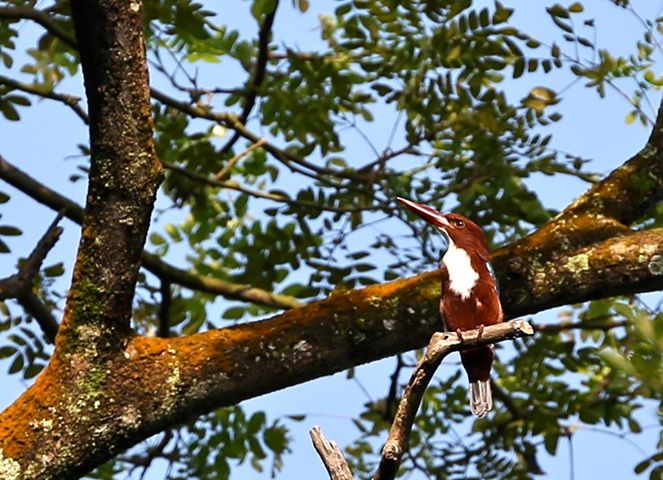
“This kingfisher was not perturbed by my presence, striking poses for a good five minutes” Goh Yew Lin
The Oriole
The Starling
Morning Vistas
All Things Bukit Brown organised a media session to meet the volunteers aka Brownies to share their hopes and aspirations for Bukit Brown, following the World Monuments Watch listing. We are grateful to Jasmine Ng for videographing the session.
http://www.youtube.com/watch?v=4j-BTwQlWos&feature=youtu.be
Part II of the recording with interviews to the media by Claire Leow and Fabian Tee (in Mandarin)
http://www.youtube.com/watch?v=CVjFZ4UuIeY&feature=youtu.be
The summary of media coverage here
Dateline 19 October 2013
The Story of the Rickshaw Pullers Strike and a Man called Low Nong Nong
(compiled with research by Raymond Goh and a Pat Sg, a member of the Facebook Group -Heritage Singapore Bukit Brown Cemetery)
Today, Raymond Goh located the tomb of rickshaw puller Low Nong Nong who died during a confrontation between striking rickshaw pullers and the police. In the clash which occurred on 17th October 1938, Nong Nong lost his life, and there were no witnesses to his death.
The rickshaw pullers were striking for lower rents of their rickshaws from the owners.
“EXCERPT: {{{ Low Nong Nong was found dying from a fractured skull, face down on the side of the street emptied of his comrades. His death sent reverberations through the rickshaw districts, making pullers more determined than ever to force the owners to come to an agreement on their terms.”
“His funeral the same day was an unnerving, demonstrable display of strength and solidarity. Three thousand men solemnly followed the lorry bearing his coffin to BUKIT BROWN CEMETERY to a pauper’s grave, and, as the police anxiously stood by and watched, one of the longest funeral processions in Singapore’s recent history, stretching from Wajang Satu to Newton Circus, passed.” (Source: Rickshaw Coolie: A People’s History of Singapore, 1880-1940)
The community of rickshaw pullers saw Low Nong Nong as a martyr to their cause. On his tomb his epithet reads:
He died for the public, his death is as heavy as Taishan, tomb erected by his fellow rickshaw pullers
“Taishan” in this case is 泰山, Mt Tai, one of the sacred mountains of China. (from Jason Kuo)
Background to the rickshaw pullers strike : The Lot of the Coolie
Many rickshaw pullers had been on prolonged strike during that period (04 Oct – 15 Nov 1938), & thus had no earnings. Low Nong Nong himself died on 17 Oct 1938 — penniless & w/o any kin in Singapore.
The community of rickshaw pullers had been periodically unemployed from 1928 onwards & throughout the post-Depression 1930s. During this period, the colonial govt had been reducing the no. of rickshaw licenses so as to encourage the use of the motorcar.
In response, profit-seeking rickshaw fleet owners (the “siong thau”) took the opportunity to hike up the rental fees. Fleet owners also made rickshaw pullers contribute part of their earnings to the mandatory “China Relief Fund”, which purportedly assisted countrymen who were suffering “deep water and scorching fire” back in China.
Low Nong Nong was probably described as a martyr by his rickshaw brethren, because:-
Despite being hungry & desperately in need of money, he dutifully observed the rickshaw strike, as previously agreed upon amongst the pullers at the 小坡 (xiǎo pō, “Small Town”) area of town.
He lost his life while participating in a rescue group that had attempted to free a Hockchew rickshaw puller, who was arrested by the police during an earlier confrontation at around 11am on 17 Oct 1938.
Background on the incident : The Betrayal
The morning altercation had occurred because Low Ah Law, a Henghua puller, had unilaterally disregarded the rickshaw strike, & blatantly plied his rickshaw on the streets of 小坡 (“Small Town”) — ie. the side of Sg River where most of the rickshaw pullers were supportive of the ongoing rickshaw strike.
Subsequently, the Henghua puller was confronted & restrained by a “Hockchew crowd” of fellow rickshaw pullers at Victoria Street. The police intervened & one of the Hockchew pullers was consequently arrested.
The “rescue” clash between the Hockchew rickshaw pullers & the police occurred during the afternoon of the same day at the junction of Arab & Victoria Streets. Police reinforcements were deployed & “strong-arm measures” were used to subdue the angry “rescuers”.
It was in this clash that Low Nong Nong was found lying face-down & dying from a broken skull on a street that had been cleared out by the police.
In a sense, Low Nong Nong — who was already famished & simply getting by his day — died alone on a street at 小坡 (“Small Town”), because a fellow 小坡 & Foochow prefecture rickshaw puller had betrayed his brethren by not observing the strike.
Meanwhile, the 大坡 (“Big Town”) rickshaw pullers (including the majority Hokkiens) — who had refused to support the strike — merely looked the other way.
* Account of Low Nong Nong’s death on the afternoon of 17 Oct 1938 from ‘Rickshaw Coolie: A People’s History of Singapore, 1880-1940’ (James Francis Warren): http://goo.gl/E7PEif
EXCERPT: {{{ Unemployed, hungry, and desperately in need of money, [Hockchew puller Low Nong Nong] had visited Seah Toon Tan, a Hockchew friend, that morning. He borrowed a dollar from him and left his house in Geylang at about 9 am, without ever having discussed the strike.
The trouble leading up to his death began when a crowd attempted to restrain a Hengwah, Low Ah Law, who had ventured along Arab Street with his rickshaw. At the junction of Victoria Street he was assaulted by a Hockchew crowd.
Police had barely arrived in time to rescue Low Ah Law and arrest one of the assailants. At once, a new crowd of around 400 began to take shape to rescue the captured puller.
Some were armed with fighting sticks, rickshaw shafts, bottles and bricks, and among them was Low Nong Nong. A clash ensued with the police. Shouts of “pah, mata, pah” (“strike, police, strike”) rent the air, as the crowd of pullers slowly closed in, injuring several constables with wooden clogs, poles and stones they hurled at them.
The situation was desperate with police injured and rickshaws wrecked all over the adjacent streets, until reinforcements arrived. Strong-arm measures were used to control and eventually disperse the crowd. Low Nong Nong was found dying from a fractured skull, face down on the side of the street emptied of his comrades. }}}

books.google.com.sg
Low Nong Nong can be found in blk 3, Div 7, no. 120A @ the pauper’s section (on a hillock about 200 meters from the tombkeepers shed at the foot of Ong Sam Leong family cluster)
s
Dateline” 21 October 2013
The carvings on the tombs at Bukit Brown are commonly drawn from the 4 Chinese classics. Brownie Yik Han spotted one particular carving on an altar table which intrigued him.
His observations of the characters depicted in the tableau taken from the Romance of Three Kingdoms and what they represent:
Instead of the usual set of suspects this tableau has a rather unique combination of figures which I have yet to come across in other tombs.
The one in the middle seems to be Zhuge Liang from his garb and feather fan. On the right is almost certainly Shun and the white elephant which helped him till his fields. And I guess the one on the left of Zhuge Liang is Liu Bei as he looks rather regal. Now, each of these characters exemplify a certain virtue: Zhuge Liang – loyalty (忠), Liu Bei – benevolence (仁),Shun – filial piety (孝), so there we have part of the traditional set of virtues 忠孝仁义, the last being righteousness which is as close to the meaning in chinese as we can get in a word.
If the martial figure to the right of Zhuge Liang represents 义, the question is who can this be as it certainly is not Guan Yu, the usual poster boy for that virtue. Of course, this interpretation assumes the two figures at the extreme left are calefaire.
Editors note: If you would like to weigh in on the mysterious characters which have not been clearly identified, please add your comments on this post.
Your can read more about other tomb carvings by Yik Han on The Wayang in the Tombs , Romance of the Three Kingdoms,
.
All Things Bukit Brown broke the news that Bukit Brown had been included on the list of the World Monuments Watch 2014, on the evening of Tuesday 8th October, 2013. It was the first listing for Singapore, and international recognition of Bukit Brown as a heritage site.
24 hours later, on Thursday 10th October, 10 am, a media session to meet the Brownies behind the submission to the World Monuments Fund, was held at Bukit Brown, under the rain tree at the roundabout. It was an appropriate setting, as this is the spot where all our guided walks begin.
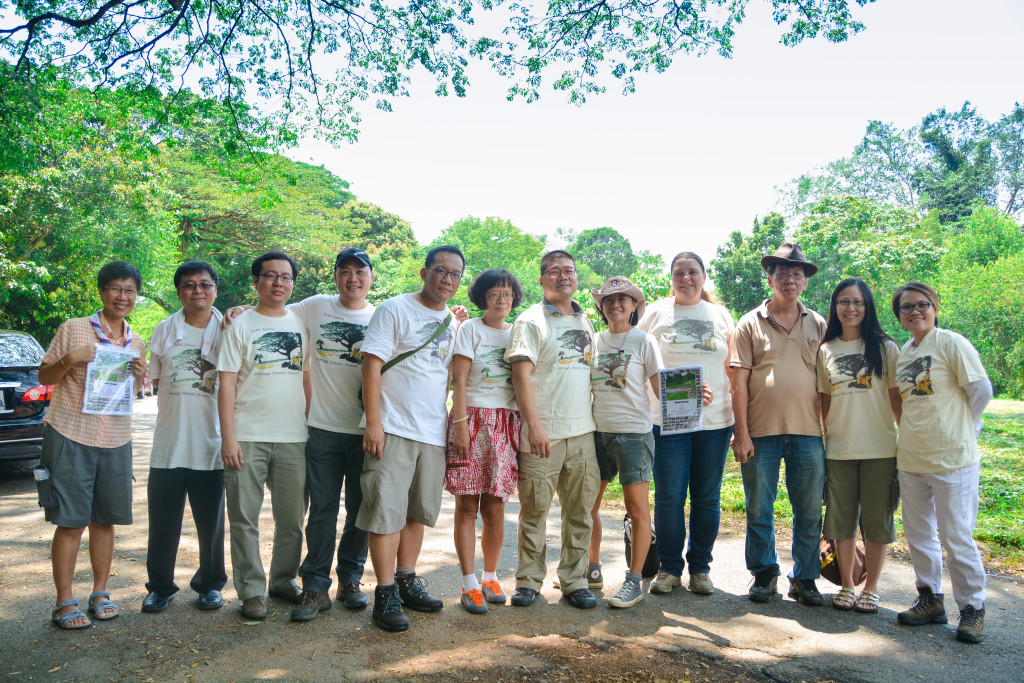
Supporters and the Brownies behind the submission for World Monuments Watch 2014 listing (photo Terry Xu)
Full video recording by Jasmine Ng here
This is a compilation of highlights and quotes of the media coverage online, in the press and in the broadcast media from 9 October to 13 October, 2013
10 October Channel News Asia TV report on Bukit Brown’s World Monuments Watch listing.
Interest group hopes that this(the listing) will lead to more engagement and a more sustainable strategy for development. Claire Leow “We hope this listing by shining international attention on Singapore will also help Singapore’s bid to get UNESCO listing for Botanic Gardens and of course eventually Bukit Brown as well and eventually other sites as well in Singapore”
The full CNA TV report here
Claire Leow, co-founder of All Things Bukit Brown, said: “It goes beyond what we’ve done for Bukit Brown; it’s more like what we can do for Singapore.
She added: “I hope it shows that we are serious, that we want a seat at the table, just so we can present what we have heard from the community, what we have heard from the people who have encouraged us, and we can share their voices too.
The full online CNA report here.
10 October Zaobao
“I hope to use this opportunity open a dialogue with the government and find a sustainable path to development. I do not think that conservation of heritage monuments and development has to be confrontational. On the contrary, we hope that conservation can aid development and vice-versa“
She pointed out that at present, talks about development and conservation are always framed in terms of trade-offs – e.g. do we want to keep land for our ancestors or make room for our descendants. Why do we not talk about other issues, e.g. are we not willing to let go of a site that could potentially be a world heritage site? In the face of global warming and the need for nature to maintain stable temperatures, can we afford to lose a site of certain environmental value to us? Claire Leow.
The full Zaobao report with translation here
10 October The Online Citizen (TOC)
“There’s more to Bukit Brown, than my own family. And I realised the things I do not know about this place and it’s going to go. And that nothing will be left for my children, grandchildren and great grand children. ” Ong Hui Lin (descendant with 3 ancestors buried in Bukit Brown)
“Yes Bukit Brown is now on the World Monument Watch but it is more than that. We nominated Bukit Brown because it is significant to our history, culture and society. I hope that this will prompt people to look into all 3 aspects.” Claire Leow
The full video report on TOC here
10 October Razor TV online
“Now with the listing, it gives credence to the fact that this is a world class heritage site. So my sense is that one has to think again about the questions,, I appreciate the challenges that urban planners face. But maybe they don’t have a larger picture and that larger picture is history and heritage, history that affects out identity” Chew Kheng Chuan (descendant with 8 ancestors buried in Bukit Brown”
“I am very mixed because I am a road user and I love homes. Homes for my children. But for Bukit Brown, it is very painful because when we lose it, we would never get back the very essence. the soul” Ong Hui Lin (descendant with 3 ancestors buried in Bukit Brown)
The full online video of Razor TV here
10 October the breakfast network
“They (All Things Bukit Brown) hope more researchers, historians, cultural studies students et cetera would step up and get involved in Bukit Brown in one way or another. “We need to think differently; we need to reframe the conversation,” said Ms Leow, who wanted people to stop seeing the trade-off as space for the living vs space for the dead. Rather, she wants to foreground Bukit Brown as a potential world monument site, with environmental value, that is at stake.
The full report of the breakfast network available here.
All Things Bukit Brown clarifies on the report : We did not submit the application for World Monuments Watch listing to “throw a spanner in the roadworks”. We submitted it because we wanted recognition, to heighten awareness and draw attention to Bukit Brown as a heritage and nature site worthy of preserving.
10 October (The Economist) Banyan Blog
“In an interview republished in his latest book, Lee Kuan Yew, Singapore’s elder statesman, who left the cabinet two years ago but still reflects the views of many in the government he led for so long, is, characteristically, yet more blunt in an interview reprinted in his latest book: “if we need the land, and we have to dig up the whole of Bukit Brown to build on it, and put the ashes in a columbarium, we will do it.”
The Brownies point out that the government presents a false choice between space for the dead and space for the expanding population that Singapore needs to sustain its growth. Bukit Brown is also for the living, and for future generations interested in how Singapore became what it is today.”
The full report on the Banyan here
10 October : Singapore Heritage Society statement on the listing:
This is the first time a Singapore site has been included in the World Monuments Watch. Together with the Singapore Botanic Gardens’ UNESCO nomination, Bukit Brown’s inclusion represents widespread international recognition of the historical importance of local heritage sites. Indeed, Bukit Brown’s narrative of early immigrants and regional histories complements the Botanic Garden’s narrative of colonial empire to provide a more complex and complete story of Singapore.
13 October Yahoo News
“With the World Monuments Watch listing, the first time a site in Singapore has been included, atBB thinks that Bukit Brown and the Gardens, which are located fairly close to each other, could be paired up for a stronger nomination, said (Catherine) Lim.
“What we’re saying is there’s an opportunity here to relook our application (to UNESCO),” she said. “It has started, but it’s going to take two years (to complete), so why not explore? We’re offering up an opportunity of a possibility… It’s for the government to consider this. I’m not sure whether they actually have considered the actual status that’s accorded Bukit Brown being on the list.”
The full report on Yahoo News here
A Question of Public Value : Bukit Brown . a thought essay by Z’ming Cik was submitted for the “My Say” category of the blog on 13th October.
9 October 2013 Straits Time (ST) Report
SINGAPORE’S Bukit Brown Cemetery has been named as an at risk site on the 2014 World Monuments Watch – a biennial listing by the World Monuments Fund which compiles cultural heritage sites that are threatened around the world.
Bukit Brown Cemetery, where the graves of pioneering Chinese immigrants to Singapore since the mid-nineteenth century stand, is one of 67 sites from 41 countries and territories.
More on the ST report here
9th October Channel News Asia (CNA) Report
SINGAPORE: Singapore’s Bukit Brown Cemetery has been placed on the 2014 World Monuments Watch, which compiles cultural heritage sites threatened around the world.
More CNA report here
All Things Bukit Brown clarifies on the report below by ST News October 10, 2013 : When asked by the reporter about the call for a moratorium to stop road works issued in March 2012, the a.t.bb’s response was “we have moved on from that” as opposed to what was reported ” the group, which hosts weekly guided tours at the site, is also sticking to a call it made last year for a moratorium on plans for Bukit Brown and for more public engagement with the Government.”
ST News Oct 10, 2013
All Things Bukit Brown, an interest group which is keen to preserve the site’s heritage and habitat, nominated it to the New York-based World Monuments Fund watch list. It was picked from 248 nominations – making it the first time that a Singapore site has made it to the list. The WMW citation said of the road and redevelopment of the site: “In destroying the cultural landscape of Bukit Brown, it is a loss to all of society.”
The non-profit World Monuments Fund has issued its watch list since the 1990s to raise awareness about threatened cultural sites. It has helped to helped restore sites in more than 90 countries, including the historic enclave of Georgetown in Penang .
The full ST report here
From The Diplomat on 30 October 2013
Abstract : “We must be reminded that there are other land uses that take up enormous amounts of space, yet hardly anyone is questioning the utility of those spaces. Singapore has 18 golf courses, one of the highest numbers per country area in the world. They take up a total of 1,800 hectares. By contrast, Bukit Brown takes up 233 hectares; one-ninth of that area. Does Bukit Brown seem very big now?”Else Teo, a freelance researcher specialising in history and heritage issues.
by Szeto Hiu Yan
The World Monuments Fund (WMF) select sites that are under threat on its watch list once every 2yrs. 3 days ago, they announced the 2014 list which included 67 sites from 41 countries selected from a list of 248 applications.
At a news conference held on location yesterday, a.t.BB (All Things Bukit Brown) said that the successful listing did not imply that it is putting pressure on the government or is attempting to block the impending construction of the road which would affect some graves.
As one of the founders of atBB, Claire Lim said “I hope to use this opportunity open a dialogue with the government and find a sustainable path to development. I do not think that conservation of heritage monuments and development has to be confrontational. On the contrary, we hope that conservation can aid development and vice-versa. “
She pointed out that at present, talks about development and conservation are always framed in terms of trade-offs – e.g. do we want to keep land for our ancestors or make room for our descendants. Why do we not talk about other issues, e.g. are we not willing to let go of a site that could potentially be a world heritage site? In the face of global warming and the need for nature to maintain stable temperatures, can we afford to lose a site of certain environmental value to us?
Claire is of the opinion that government and society should take this opportunity to reframe the conversation and exercise our mutual imaginations to allow more perspectives to bear on this matter. This frame of mind will expand the possibilities in our dialogue.
a.t.BB also shared its plans for Bukit Brown in their application to WWF. They hope to collaborate with National Heritage Board (NHB) and NParks and turn Bukit Brown into a cultural heritage site and a nature park to attract visits. Bukit Brown will retain most of its original state with the addition of basic facilities such as rest rooms. a.t.BB will continue to provide free guided walks and to increase its community outreach especially towards the young.
With the listing, a.t.BB hope to heighten overall public awareness of BB’s repository of cultural heritage both locally and abroad. E.g. instead of expensive overseas trips to learn about culture and heritage , educational institutions could look first at visits to local sites. a.t.BB also hopes to promote edu-tourism by attracting more visits by foreign students and overseas academic scholars.
As the a.t.BB current expenses are still manageable, it does not have any plan to apply for WWF funding.
According to Catherine Lim, another founder, WMF routinely provides assistance to countries that wish to elevate WMF sites to UNESCO sites. She therefore hopes that Singapore’s current UNESCO application for Botanical Gardens could in future be twinned with Bukit Brown to increase the chances for both sites to be listed. a.t.BB also hopes that it could work closely with Penang and Malacca as UNSECO sites, to raise the profiles of both countries’ cultural heritage
Catherine said that since the founding of BB in Dec 2011, over 7,000 people have been acquainted with Bukit Brown, through the free tours conducted by it. a.t.BB could also learn from the other WMF listed sites about how to raise awareness of BB.
The report first appeared in Zaobao on 11 October 2013 and is translated by Brownie Fabian Tee.
Zaobao’s Sunday 13 October round-up of quotable quotes also included the quote by Claire Leow:
“I absolutely do not think that the dialogue between preservation and development is necessarily confrontational. I hope that preservation of cultural heritage can aid urban development and vice-Versa.” – said co-founder of all things Bukit Brown Claire Leow who expressed the hope that that the listing of BB in the World Monuments Watch 2014 would open more channels of dialogue to find a common path for sustainable development.
The Chinese report follows:
武吉布朗学会: 武吉布朗列世遗观察名单并非向政府施压
司徒晓昕 报道
szetohy@sph.com.sg
武吉布朗坟场成功列入世界历史遗址观察名单后,负责申遗的武吉布
世界历史遗址基金会(World Monuments Foundation)每两年选出濒危的世界遗产,将之列入观察
武吉布朗学会(All Things Bukit Brown)昨早在武吉布朗举行的记者会上表示,武吉布朗成功申
学会创办人之一廖雪珠说:“我们希望趁此机会展开更多对话,一起
她指出:“我们在讨论这个课题时总要提到权衡的问题,而这最后往
廖雪珠因此认为,政府和社群应趁此机会重塑对话的方式,大家应该
武吉布朗学会也叙述了申列过程中,向世界历史遗址基金会提出的未
如今武吉布朗列入了观察名单,学会希望这能提高国人和国际人士对
由于学会目前的经费不高,因此不打算向世界历史遗址基金会申请资
另一名创办人林雪芳说,世界历史遗址一向为希望申列世界遗产名录
她说:“学会自2011年12月创立后开始提供免费导览团,至今
武吉布朗学会希望在武吉布朗坟场成功申列世界历史遗址观察名单后
本地和外国人对武吉布朗的认识能有所提高。(谢智扬摄)
A Question of Public Value : Bukit Brown
by Z’ming Cik
(14 October 2013)
It has been a sweet triumph of sorts for the heritage enthusiasts of Bukit Brown who dub themselves the ‘Brownies’. They have now managed to earn international recognition for the site by placing it on the 2014 World Monuments Watch – even if that does not seem likely to change the government’s immediate plans to build a highway cutting through it.
It is not just an affirmation of its significance that Bukit Brown has been selected, alongside Venice in Italy, Yangon historic city centre in Myanmar and sites in war-torn Syria such as a 17th-century souk in Aleppo, as one of 67 cultural heritage sites currently “at risk from the forces of nature and the impact of social, political and economic change” – in the words of the New York-based World Monuments Fund.
It is also an affirmation of a universalistic ethos that any cultural heritage of the world can transcend the narrow confines of ethnic identities, and be protected by all mankind, against irreplaceable loss due to unchecked urban development or other factors. Such is indeed also the true spirit behind the 1972 UNESCO World Heritage Convention, best known for the mechanism of the world heritage list, on which Singapore is attempting to inscribe its Botanic Gardens.
The purpose of this little article here is not to make a case for the nomination of Bukit Brown as a world heritage site – though that can definitely make a fruitful exercise, given its historical and aesthetic values based on all the knowledge accumulated. Instead, I would like to approach the issue of Bukit Brown from a more general perspective, of what is stake in general with plans to sacrifice such a site for traffic and future residential use, and how decisions should be arrived at from the perspective of public administration. For as the Brownies have expressed at a press conference last week, there is an urgent need to ‘reframe’ public discussion, away from a false dichotomy that treats it as a choice between space for the dead and space for the living.
Indeed, the issue of Bukit Brown is not a dilemma between past and future, tradition and modernity, heritage and progress, or community and nation. It may be framed instead as a question of ‘public value’ for the average Singapore citizen, whereby one should weigh between the gains of constructing a highway to ease traffic (and allowing more cars on the road) and the environmental costs which may impact on the quality of life for all residents, not to mention the opportunity costs in compromising a heritage site with value in education and tourism use.
I am borrowing the term ‘public value’ here from Mark H. Moore, Kennedy School of Government, Harvard University, author of the book Creating Public Value. Under such a framework of public administration, one may discuss whether a public enterprise reflects the desires or aspirations of the citizens, and also analyse whether it is cost-effective for collective interests.
This gives us a clearer picture of the problem when we consider the following points. First, in terms of desires or aspirations, 54% of Singaporeans according to the recent Our Singapore Conversation Survey have expressed a preference for preservation of heritage spaces over infrastructure, and 62% have expressed a preference for preservation of green spaces over infrastructure. The Singapore Heritage Society also cites an earlier Heritage Awareness Survey whereby 90% of Singaporeans agree that preservation of heritage would become more important as Singapore becomes a global city.
Second, plans for the 8-lane highway through Bukit Brown were announced without full disclosure of its Environmental Impact Assessment, which should rightly be of public interest. Nature Society has cited the importance of Bukit Brown as a green lung with cooling effects on the climate and mitigating effects against flash floods. We have surely seen how Urban Heat Island (UHI) effects, due to increased urban surfaces and industrial and car emissions, lead to more flash floods. The National Environment Agency is now advising Singaporeans to brace for warmer and wetter days in the next century. Should Singaporeans be inspired then to make extra more babies? Would more population growth and urban development be sustainable in the long run?
The idea of ‘sustainability’ is incidentally concerned not only with economic development but also with environment and social equity; it begs us to rationalise the needs of the present generation, in order not to compromise the ability of future generations to meet their own needs. So who are we to decide for the future generations that they have no need for natural green spaces, for authentic cultural and natural heritage?
Third, an 8-lane highway may be cost-effective for the operations of LTA and its contractors, but is it ‘cost-effective’ for all Singaporeans? On the concern of infrastructure alone, will the benefits be well distributed among Singaporeans? I believe a lot of Singaporeans would prefer to see improvements in public transport – whereby they should be managed as public enterprises rather than as profit-making private enterprises, while controlling the growth or inflow of population meantime. COEs this month have just reached 90K, and ERP rates have been rising too, so how does a new highway represent the interest of the average Singaporean? Should the dictum of the government be what former head of Civil Service, Ngiam Tong Dow recalls: “What’s wrong with collecting more money?”?
An 8-lane highway may make good business sense if the objective is to attract higher demands for car traffic. But it is a road of no return where environmental costs and the loss in heritage are concerned.
Perhaps the word ‘heritage’ is not always useful here, for some people may mistake it as being synonymous with ‘tradition’, and they assume that to acknowledge a cemetery dating back to the Qing dynasty as heritage would mean having to wear a pigtail, or to bow before the image of some dead old merchants and ask for 4D numbers. They imagine ‘heritage’ as a form of liability, instead of as a form of resource for an authentic experience of national history, or of works of art.
How the historical significance of Bukit Brown as ‘heritage’ should be interpreted, is certainly open to debates. But being ‘modern’ does not mean discarding everything of the past. We are not living in an era of Cultural Revolution somewhere in China. The National Heritage Board has also recognised the importance of Bukit Brown Cemetery and the need to work with the community for its preservation.
Being ‘modern’ also means being able to rationalise how one should help steer the development of one’s country or the world at large. Hopefully more Singaporeans will be able to look at the issue of Bukit Brown not as a matter of whether one has personal affinity to it, but from a perspective of public value.
We may ask ourselves: What heritage values does it hold on a local level and on a global level, and how would that represent the desires and aspirations of Singaporeans? In what circumstances would redevelopment be justifiable, and in what way would that represent social equity and long-term interests among Singaporeans?
We as Singaporeans need to rethink what this land of Singapore means to us, and what the word ‘progress’ truly means.
Z’ming Cik is pursuing his Phd in heritage studies in Germany.
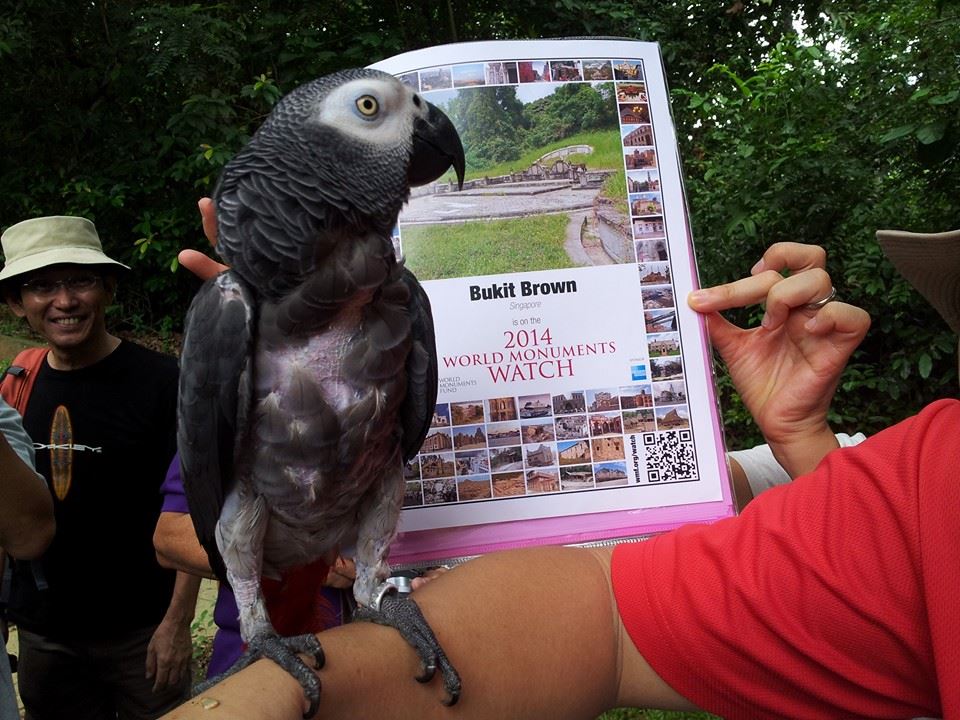
The first tour after the announcement of Bukit Brown’s World Monuments Listing. Basil the macaw weighs in on what it means (photo Khoo Ee Hoon)
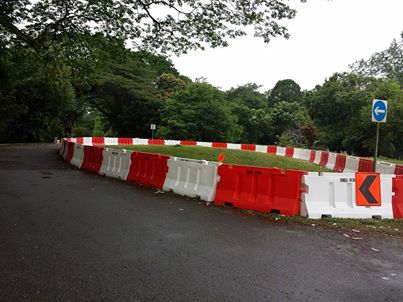
A day after the meet the media session with Brownies on the World Monuments Watch listing, the barricades are up at the roundabout (photo Milli Phuah)
SINGAPORE HERITAGE SOCIETY’S STATEMENT ON LISTING OF BUKIT BROWN ON 2014 WORLD MONUMENTS WATCH
10 October 2013
The Singapore Heritage Society is heartened that Bukit Brown has been included in the World Monuments Watch list for 2014.
Founded in 1965, the World Monuments Fund, which runs World Monuments Watch, is based in New York and is the world’s leading independent organization dedicated to saving mankind’s treasured places. Its expertise and resources, including support from UNESCO, have helped restore some 600 sites in more than 90 countries.
On this year’s Watch List is also Pokfolum Village in Hong Kong, while other sites listed in previous years include the Buddhist Remains of Bamiyan (destroyed by Taliban in 2001), the historic Gingerbread Neighborhood of Port-au-Prince, Haiti (damaged by earthquake), the Cultural Heritage Sites of Syria (destroyed or damaged in the civil war) and Penang’s Georgetown Historic Enclave (2000 and 2002 Watch List) which is now a UNESCO World Heritage site.
This is the first time a Singapore site has been included in the World Monuments Watch. Together with the Singapore Botanic Gardens’ UNESCO nomination, Bukit Brown’s inclusion represents widespread international recognition of the historical importance of local heritage sites. Indeed, Bukit Brown’s narrative of early immigrants and regional histories complements the Botanic Garden’s narrative of colonial empire to provide a more complex and complete story of Singapore.
The nomination of Bukit Brown for World Monuments Watch inclusion was advanced by the community group, All Things Bukit Brown. This has been a grassroots initiative in response to Prime Minister Lee’s National Day Rally call to Singaporeans to step forth to make Singapore a better home for ourselves.
It is also in keeping with independent surveys on heritage awareness in Singapore. The 2006 Heritage Awareness Survey revealed that almost all Singaporeans surveyed (98.4%) felt that heritage plays a positive role in their lives and that an overwhelming 90% agreed that preserving our heritage would become more important as Singapore moves towards becoming a global city.[1] The survey also revealed that 87% of Singaporeans agreed that a better understanding of Singapore’s history and heritage would increase their own sense of belonging to Singapore. Meanwhile the 2013 Our Singapore Conversation survey showed that Singaporeans wanted heritage spaces to be preserved as far as possible.[2]
This World Monuments Watch inclusion is not a one-off event but part of an on-going series of Bukit Brown-related events such as symposiums, exhibitions and public talks that have been organised by citizens and community groups that have been taking place since November 2011.
Finally, the inclusion in the World Monuments Watch 2014 list is in keeping with the Singapore Heritage Society’s call for Bukit Brown to be gazetted as a heritage site. This inclusion should be seized as the opportunity to raise greater awareness of Bukit Brown and to conduct comprehensive documentation of the greater Bukit Brown space that includes the Seh Ong, Kopi Sua and Lau Sua cemeteries, which will provide the basis for future preservation plans.
[1] Channel News Asia (18 July 2007) Heritage awareness rising among Singaporeans: study; see also http://www.heritagefest.org.sg/2007/official/images/stories/Downloads/press_release_shf2007_opening_ceremony.pdf (accessed 8 Oct 2013)
[2] https://www.oursgconversation.sg/wp-content/uploads/2013/08/OSC-Survey.pdf (accessed 8 Oct 2013)










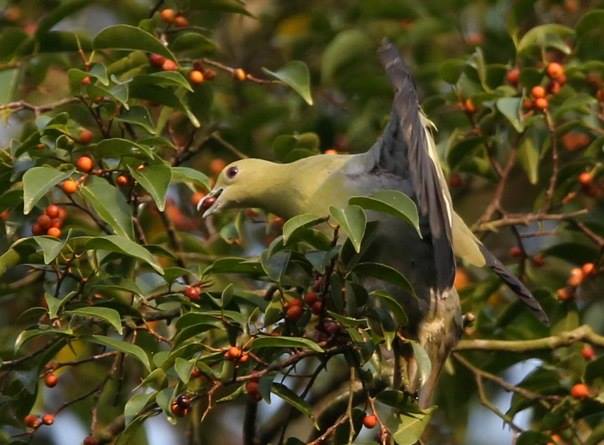
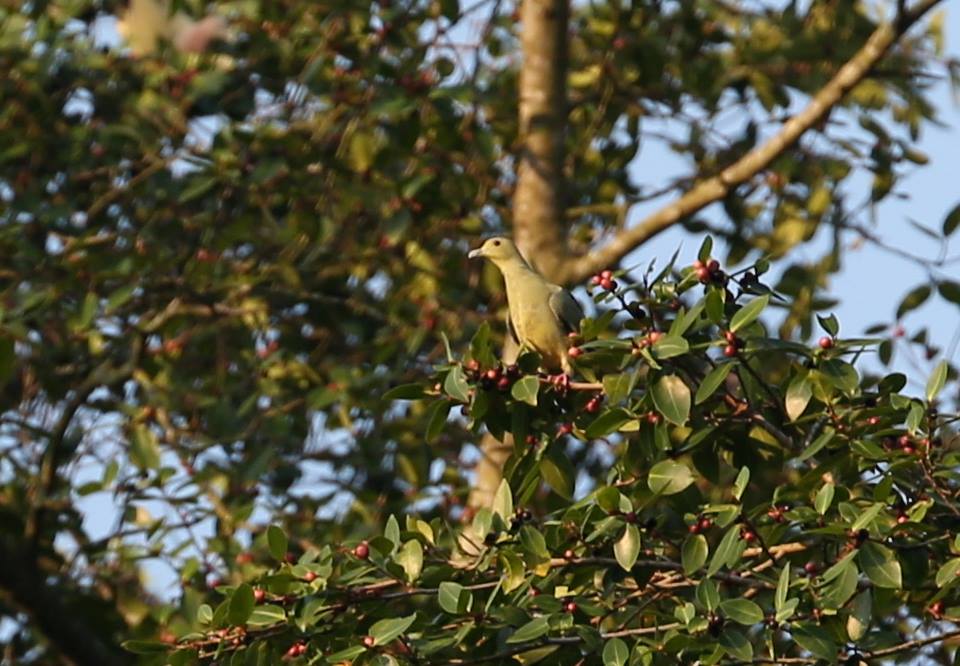
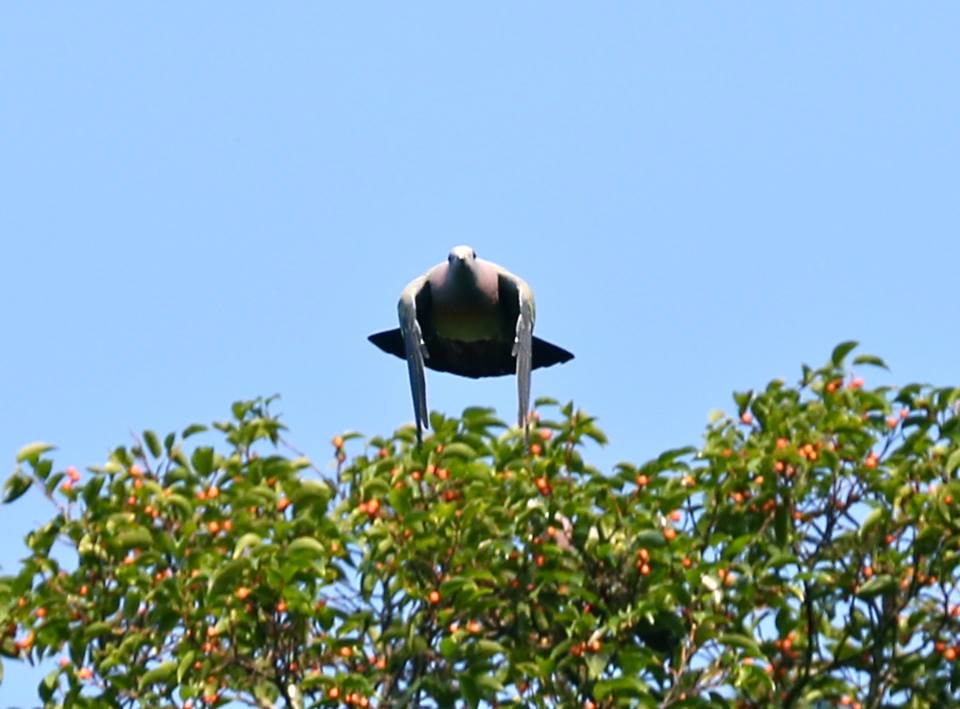
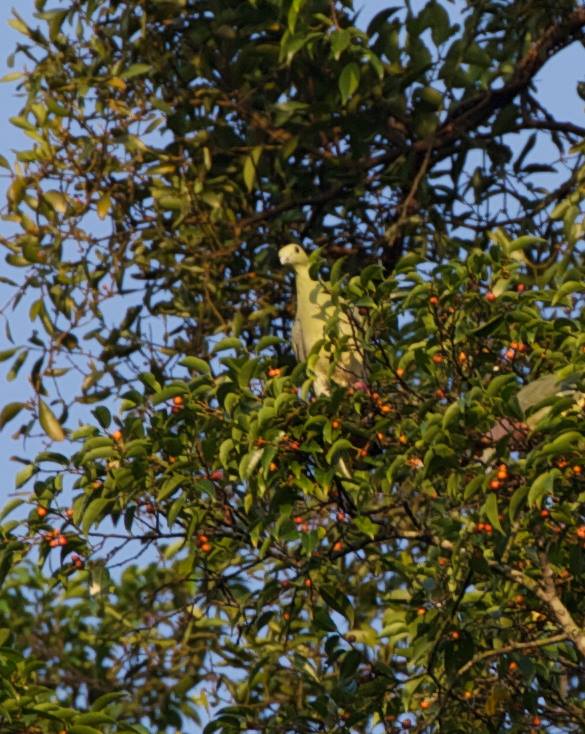
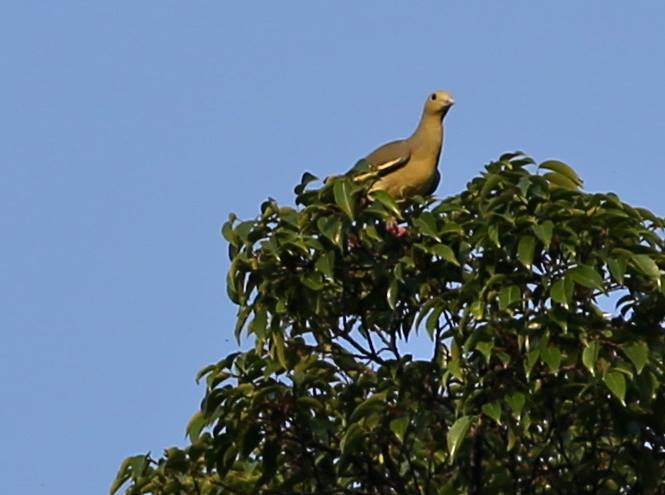
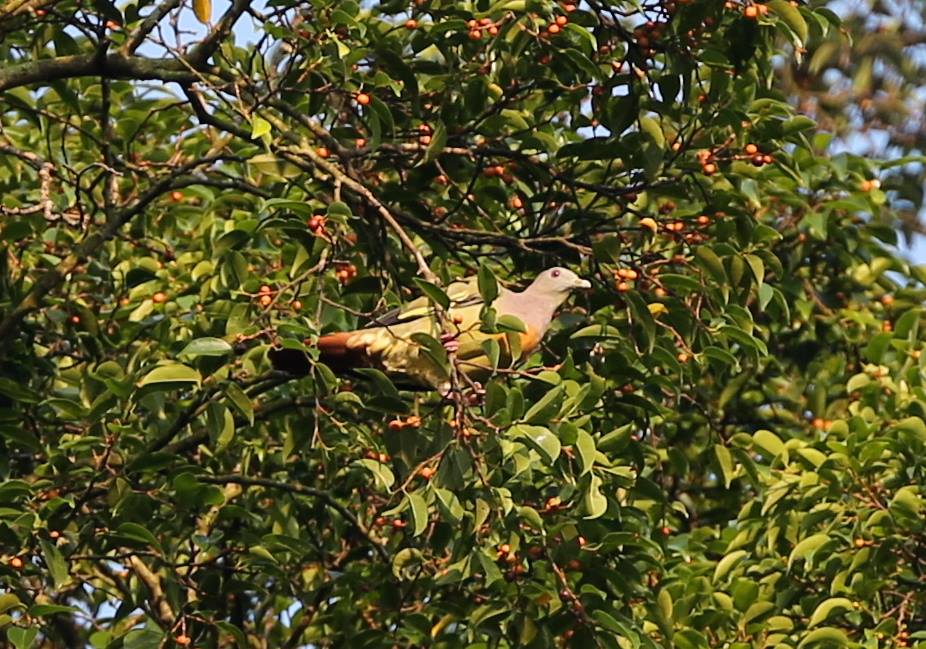
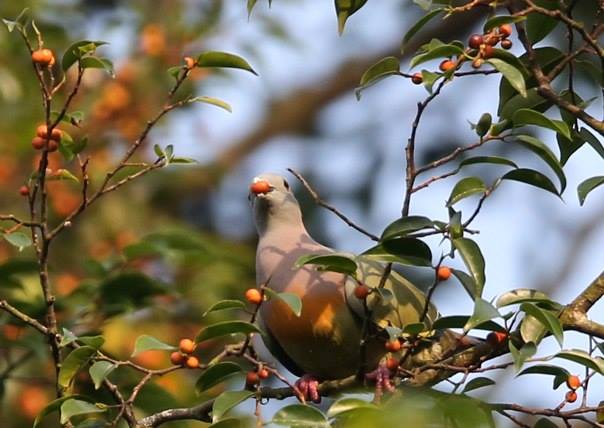
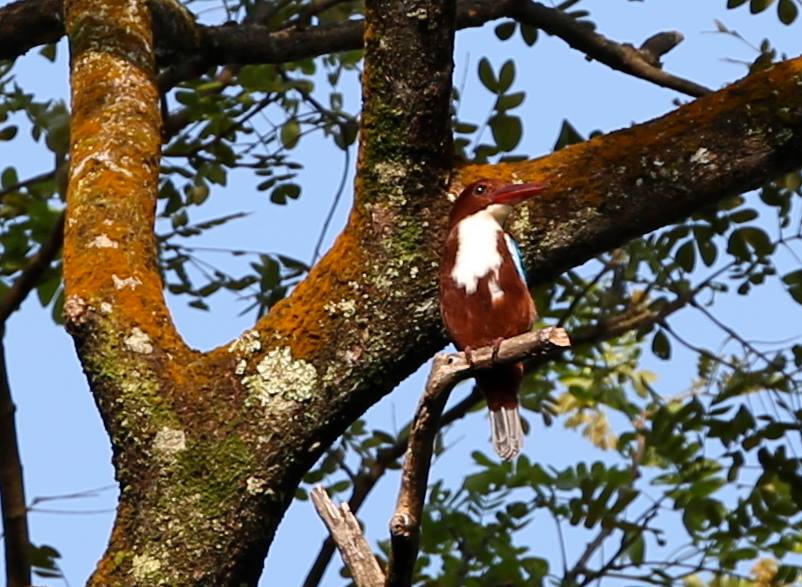
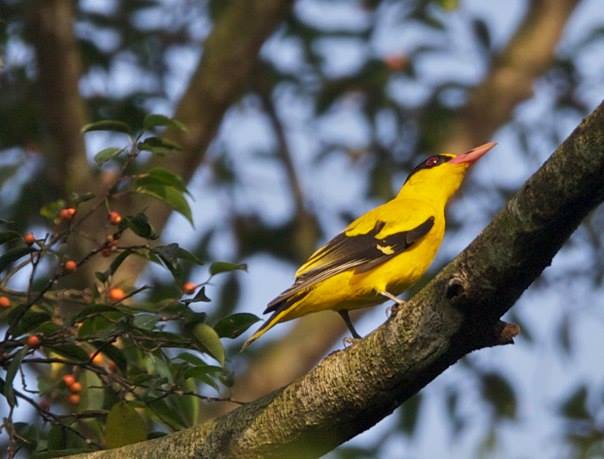
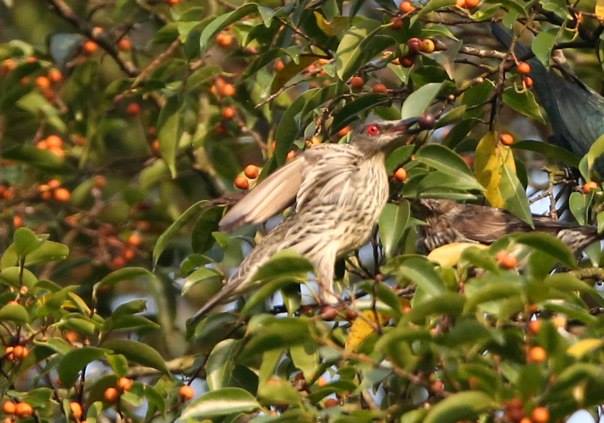
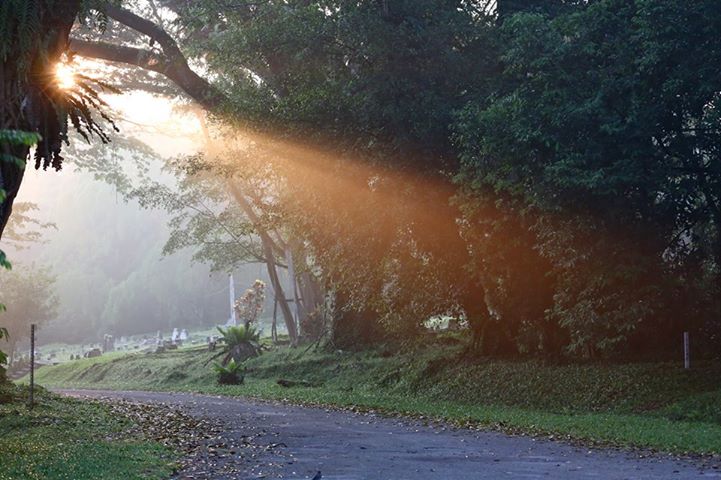
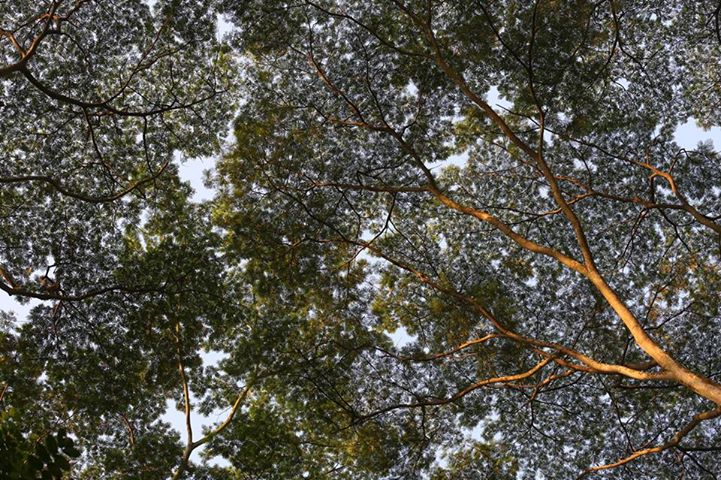
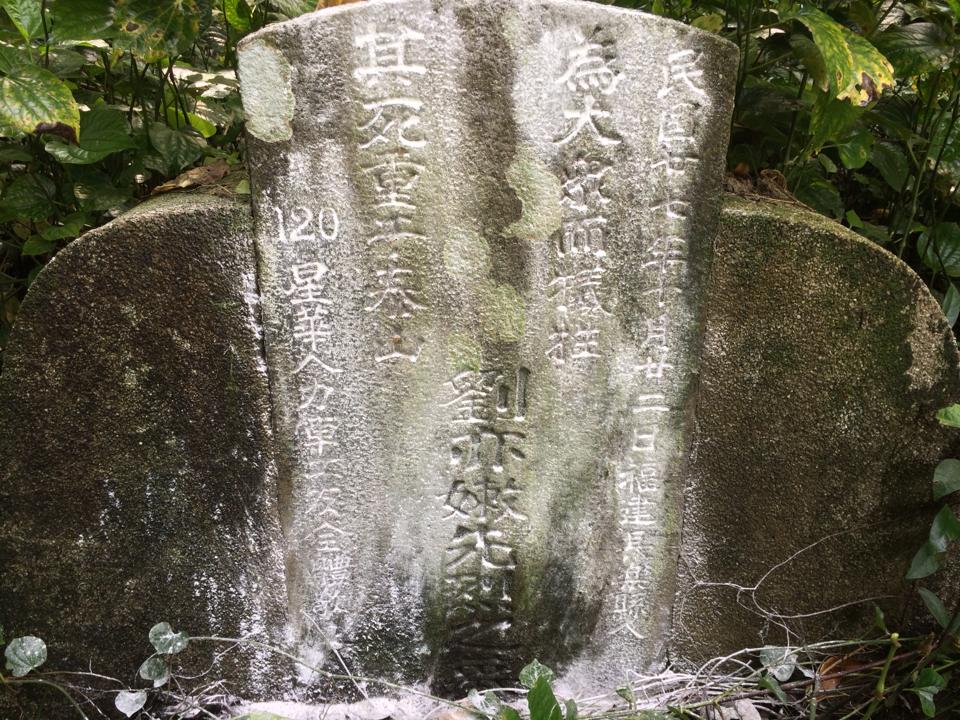
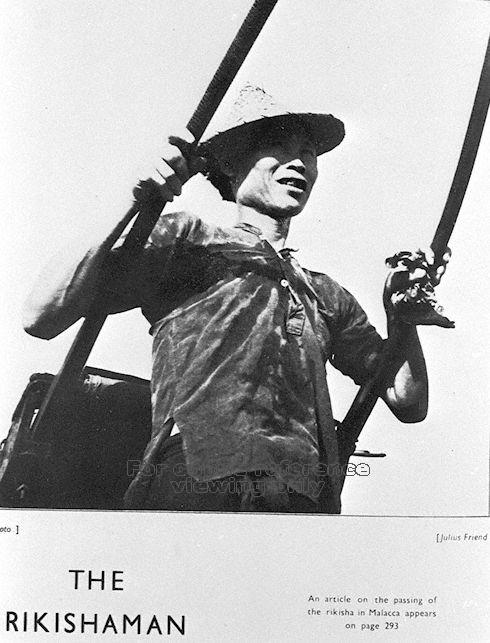
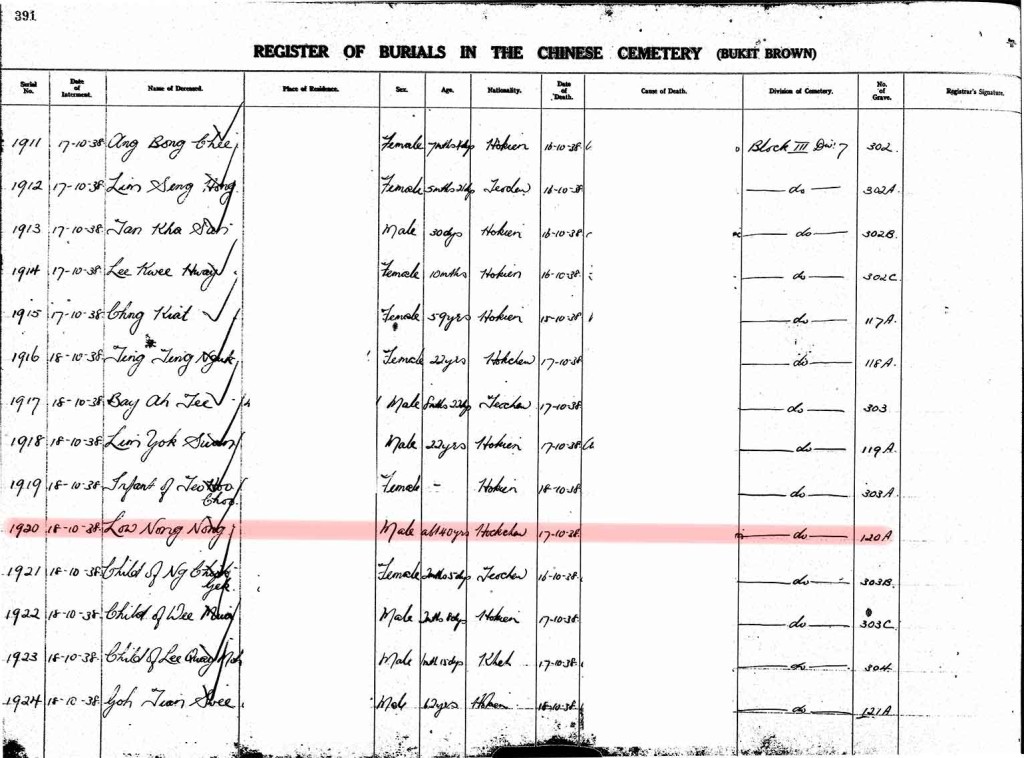
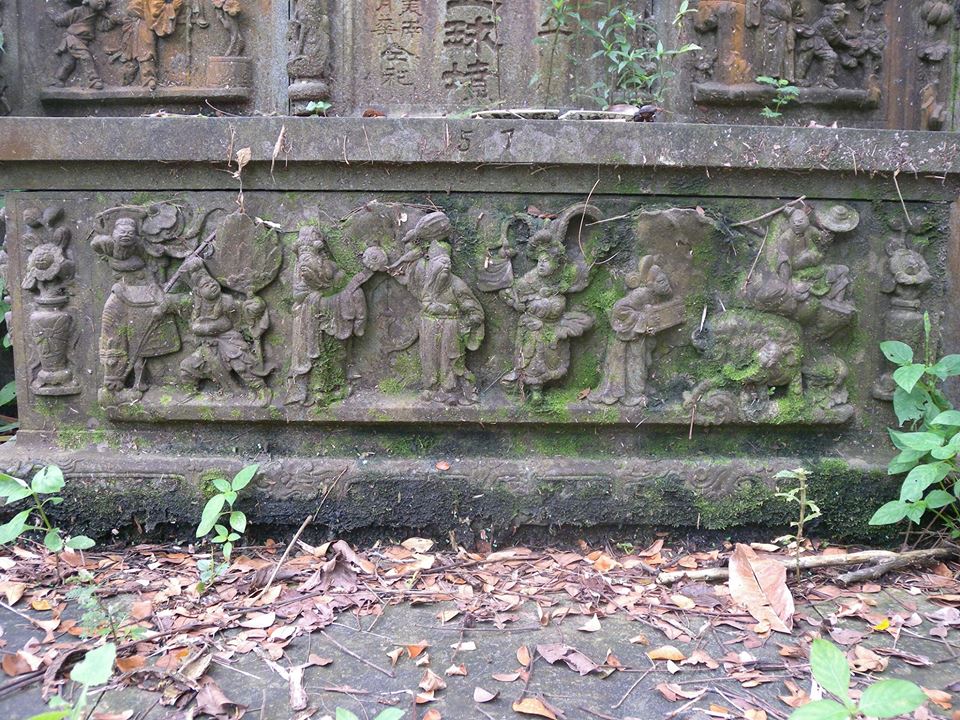
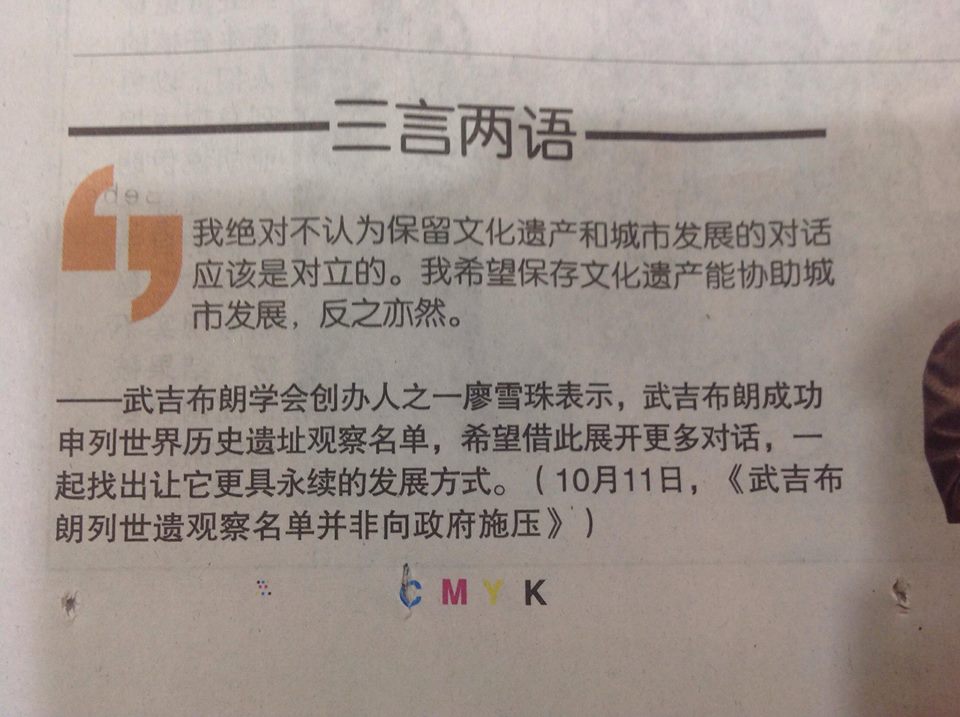

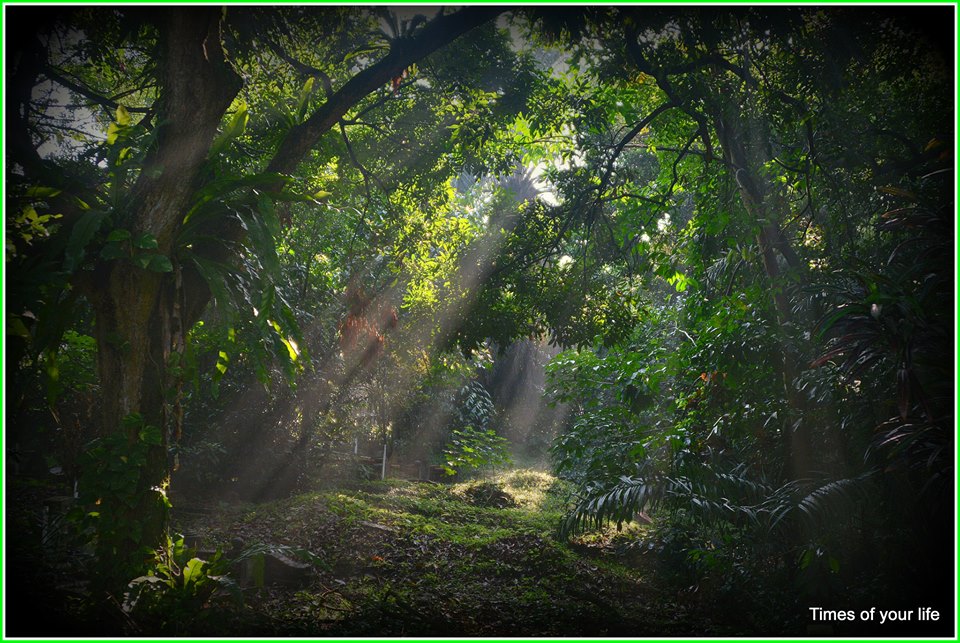
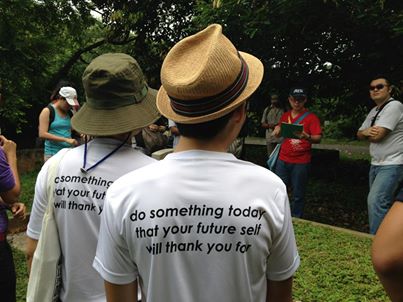

Recent Comments